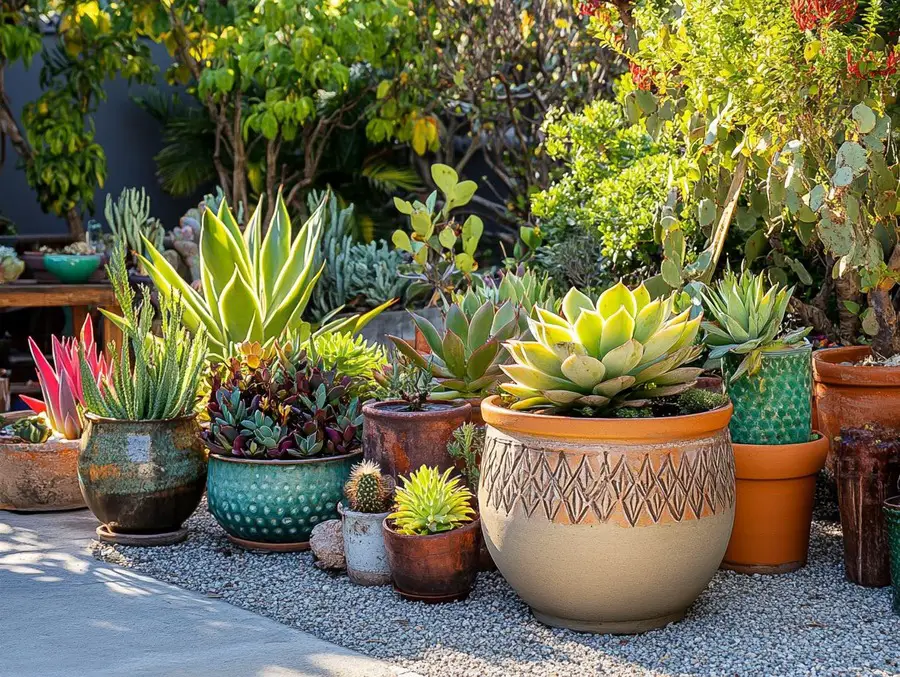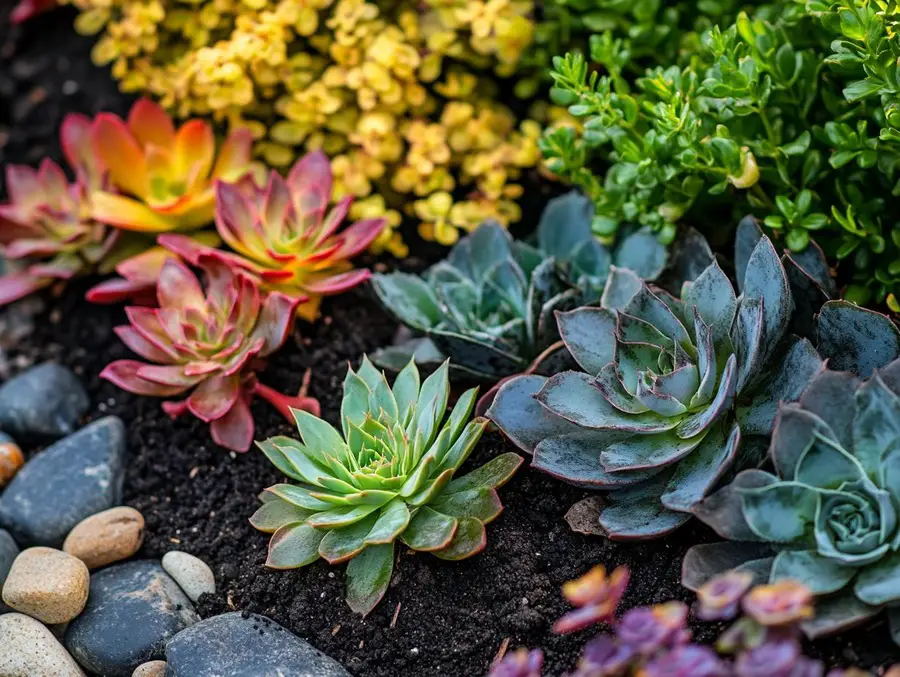We use affiliate links. If you purchase something using one of these links, we may receive compensation or commission.
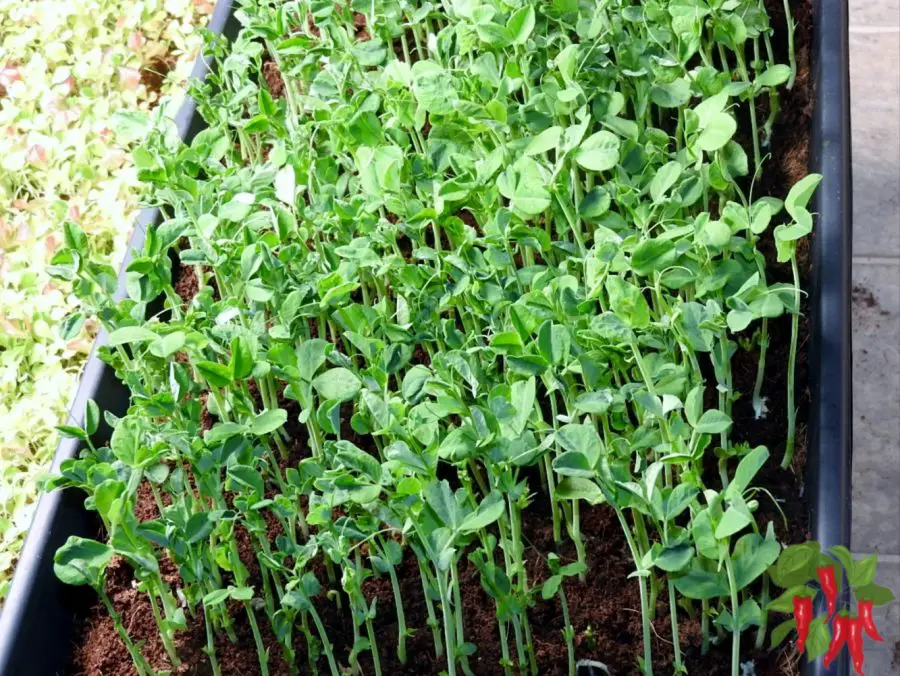
Microgreens generally do not regrow after cutting. When microgreens are harvested, usually just after the cotyledon leaves have fully developed, the primary source of energy for growth is removed. This limits their ability to regrow.
However, there are a few exceptions. Some varieties like peas and wheatgrass might have a slight chance of regrowing, but this is not guaranteed and the quality or yield of the regrowth may not be as high as the initial harvest.
Do microgreens regrow after cutting?
Key Takeaways:
- Do microgreens regrow after cutting?
- Generally, they do not.
- Most microgreens, once harvested, don’t regrow because they lack sufficient energy reserves.
- However, some like peas and wheatgrass might sprout again.
- The success and quality of subsequent growth are often less than the initial harvest.
Ever wondered, ‘Do microgreens regrow after cutting?’ You’re not alone!
This common question among indoor gardening enthusiasts opens the door to understanding the fascinating life cycle of these tiny, nutrient-packed plants.
Join us as we uncover the mysteries of microgreen regrowth and provide tips for successful indoor gardening.
Do microgreens regrow after cutting?
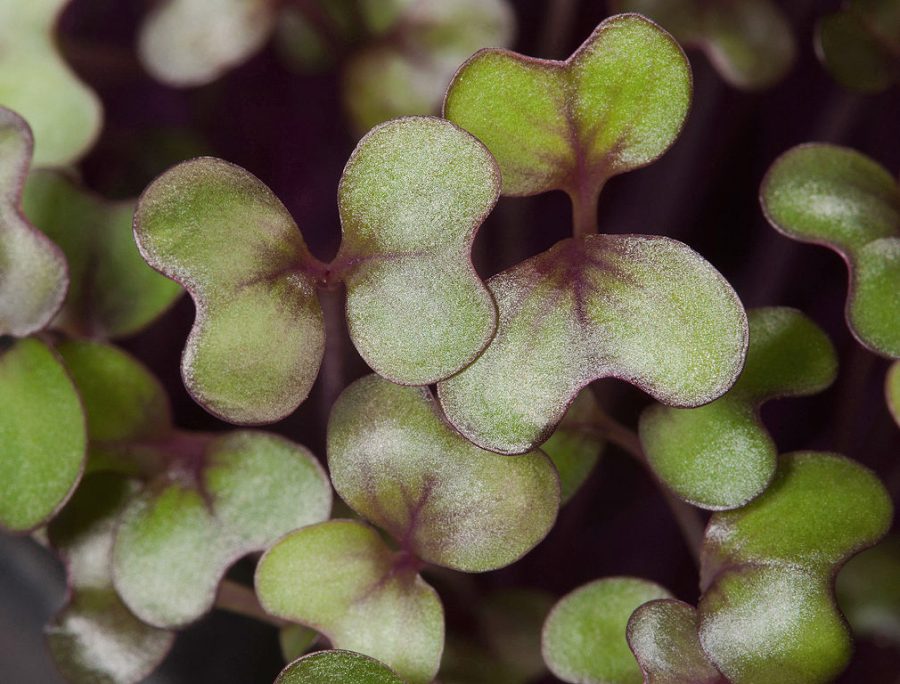
Microgreens have become a standout trend in indoor gardening, captivating gardeners with their ease of cultivation and nutritious benefits.
These tiny greens, harvested just after the first leaves develop, are more than just a garnish; they are packed with flavor and nutrients.
The popularity of microgreens has soared due to their versatility in growing environments, including small spaces like urban apartments.
With the rising interest in sustainable living, the idea of regrowing microgreens has gained attention.
This approach not only maximizes the yield from each seed but also aligns with eco-friendly gardening practices.
What Are Microgreens?
Microgreens are young vegetable greens, typically harvested just after the cotyledon leaves have developed.
They are known for their intense flavor and high nutritional value.
Unlike sprouts, microgreens are grown in soil or soil substitutes, need sunlight, and are harvested above the soil level.
Popularity in Indoor Gardening
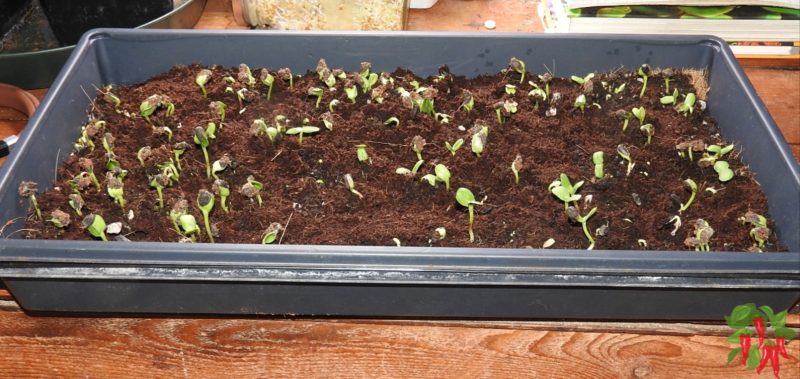
Indoor gardening enthusiasts love microgreens for their minimal space requirements and quick growth cycle.
They can be grown year-round in small trays on windowsills or under grow lights, making them perfect for those with limited outdoor gardening space.
Sustainable Gardening and Regrowth
The concept of regrowing microgreens connects with the principles of sustainable gardening.
This practice aims to reduce waste, reuse resources, and maintain the natural ecological balance.
Exploring whether and how microgreens can be regrown after harvesting ties into these principles, offering a potentially more sustainable approach to indoor gardening.
Understanding Microgreens and Their Growth Cycle
Microgreens are not just your regular garden greens; they are a special category of plants that are harvested at a very young stage.
They are essentially the seedlings of vegetables and herbs, grown not for their flowers or fruits but for their flavorful and nutrient-rich leaves.
Microgreens are the stage between sprouts and baby greens, making them a unique part of the plant’s life cycle.
What Exactly Are Microgreens?
Microgreens are the young seedlings of edible vegetables and herbs.
Unlike full-grown vegetables, they are harvested soon after their first leaves appear.
These leaves are known as cotyledons. Microgreens can be grown from a variety of seeds, including lettuce, kale, radish, beet, watercress, herbs, and many others.
They are famous for their intense flavors and are often used in salads, sandwiches, and as garnishes.
Microgreens are vegetable greens (not to be confused with sprouts or shoots) harvested just after the cotyledon leaves have developed with one set of true leaves. They are used as a visual, flavor and texture enhancement. Microgreens are used to add sweetness and spiciness to foods. Microgreens are smaller than “baby greens” because they are harvested soon after sprouting, rather than after the plant has matured to produce multiple leaves. Wikipedia
The Growth Cycle of Microgreens
The growth cycle of microgreens is fascinatingly quick and simple. It usually begins with the sowing of seeds in a tray filled with soil or a soil substitute. These seeds typically germinate within a few days, depending on the variety.
- Germination Stage: This is when the seeds start to sprout. It usually takes 2-3 days for most microgreen seeds to germinate.
- Cotyledon Stage: After germination, the cotyledon leaves (the first set of leaves) emerge. These leaves are not true leaves but are part of the seed’s embryo. The cotyledon stage lasts for about 4-7 days.
- True Leaf Stage: Following the cotyledon stage, true leaves start to develop. This is when the plant begins photosynthesis, growing more rapidly.
Harvesting Microgreens
The usual harvesting stage for microgreens is right after the cotyledon leaves have fully developed and before the true leaves emerge.
This stage typically occurs about 7-14 days after planting, depending on the type of microgreen.
At this point, the microgreens are at their peak in terms of flavor and nutritional content.
Harvesting involves cutting the greens just above the soil line, leaving the roots behind.
Understanding the growth cycle of microgreens is essential for both successful cultivation and potential regrowth.
This knowledge helps in determining the optimal time for harvesting to ensure the best flavor and nutritional value of the microgreens.
Can Microgreens Regrow After Cutting?
The possibility of microgreens regrowing after cutting is a topic of interest for many indoor gardeners.
While the regrowth of microgreens isn’t universally guaranteed, certain conditions and types of microgreens are more conducive to regrowth.
Regrowth Potential of Microgreens
Microgreens, in general, have a limited ability to regrow after being harvested.
This limitation is mainly due to the way microgreens are grown and harvested.
When microgreens are cut, their primary source of energy – the cotyledon leaves – is removed.
This makes it challenging for the plant to regrow since these leaves are vital for photosynthesis, the process plants use to convert light into energy.
The Role of Seed Energy in Regrowth
The energy stored in the seed plays a crucial role in the regrowth potential of microgreens.
Each seed contains a finite amount of energy, which is used to fuel the initial growth of the plant.
Once this energy is expended, the plant’s ability to regrow depends on its ability to photosynthesize and produce more energy.
This is why most microgreens, once harvested, do not regrow because their energy reserves are depleted.
Microgreens with Higher Regrowth Potential
However, not all is lost. Some types of microgreens have a better chance of regrowing.
Varieties like peas and wheatgrass stand out in this regard. These plants have larger seeds that store more energy, giving them a higher potential to regrow after cutting.
Peas, in particular, can develop multiple sets of leaves, allowing for photosynthesis to continue even after the initial harvest.
I can vouch for this because my pea shoot microgreens did regrow. I did this by cutting above a stem leaving a leaf or two.
Wheatgrass, being more grass-like, can also continue to grow back for a while, though subsequent harvests may not be as robust as the first one.
These are examples of microgreens that can regrow, albeit with varying degrees of success.
To sum up, while the regrowth of microgreens is not a universal characteristic, understanding the factors that influence it, such as the type of seed and its energy content, can help gardeners select varieties with a higher likelihood of regrowth.
This understanding is crucial for those looking to maximize their yield and practice sustainable gardening methods.
Challenges and Limitations of Regrowing Microgreens
While regrowing microgreens can be a sustainable practice, there are several challenges and limitations that gardeners should be aware of.
These range from increased risks of mold and contamination to the nutritional and flavor aspects of the regrown greens.
Risk of Mold and Contamination
One of the primary concerns when attempting to regrow microgreens is the risk of mold and contamination.
After the first harvest, the remaining plant material and soil are more susceptible to developing mold and other pathogens.
This is especially true in the moist environment that microgreens require.
This increased risk not only affects the health of the regrown plants but can also pose a risk to consumers.
Nutritional and Flavor Degradation
Another significant consideration is the potential degradation in nutritional value and flavor of regrown microgreens.
Since the plants have already used a substantial amount of their stored nutrients in the first growth cycle, the regrown greens might not be as nutrient-dense.
Additionally, the flavor profile of the second growth can be less intense or different from the first harvest, which might not be appealing to everyone.
Inconsistencies in Growth and Yield
Finally, gardeners should be prepared for inconsistencies in growth and yield during the second harvest.
The regrowth of microgreens is not always predictable, and the yield is often lower compared to the first harvest.
This can result in stunted growth and uneven maturation of the plants.
The inconsistency in growth not only affects the quantity but can also impact the overall quality of the microgreens.
In summary, while regrowing microgreens can be a part of sustainable gardening practices, it’s important to be aware of these challenges.
Understanding these limitations helps gardeners make informed decisions about whether to attempt regrowing microgreens and how to manage the process for the best possible outcomes.
Best Practices for Regrowing Microgreens
Regrowing microgreens is a delicate process that requires specific conditions and care.
By following best practices, gardeners can increase their chances of successfully regrowing these plants.
These practices include maintaining adequate environmental conditions and employing careful harvesting techniques.
Essential Conditions for Regrowth
- Adequate Watering: The soil should be consistently moist but not waterlogged. Overwatering can lead to root rot, while insufficient water can stress the plants, limiting their recovery and growth potential.
- Optimal Light Conditions: Adequate lighting is crucial for photosynthesis, especially after harvesting when the plant needs to regenerate. Ensure the plants receive sufficient natural or artificial light for healthy regrowth.
- Temperature and Humidity Control: Creating an environment with suitable temperature and humidity levels is essential. Extreme conditions can hinder the regrowth process, so maintaining a balanced environment is key.
- Pest and Disease Management: Keep a close eye on the health of your microgreens. Addressing any signs of pests or diseases promptly is crucial for successful regrowth, as stressed or damaged plants are less likely to recover.
Harvesting Techniques to Encourage Regrowth
- Leaving Some Foliage: When harvesting, try to leave a portion of the foliage, especially if the plant has true leaves. This allows the plant to continue photosynthesizing and supports new growth.
- Gentle Handling: Be cautious not to disturb the roots or compact the soil around the base of the plant during and after harvesting. Gentle handling helps maintain the plant’s integrity and increases the likelihood of regrowth.
Importance of Using Sharp Tools for Clean Cuts
Using a sharp knife or scissors for harvesting is vital. Clean cuts help in reducing damage to the remaining part of the plant, increasing the chances of regrowth.
Dull tools can crush or damage the stems, impeding the plant’s ability to recover and grow back.
By implementing these best practices, gardeners can enhance their chances of successfully regrowing microgreens.
While not all varieties may respond equally to these efforts, applying the right techniques and environmental conditions can make a significant difference.
Which Microgreens to Try Regrowing
When it comes to regrowing microgreens, not all varieties are created equal.
Some types have a higher chance of successful regrowth, while others are less likely to thrive after the initial harvest.
Knowing which microgreens to try can save time and increase the likelihood of a second harvest.
Microgreens with Higher Regrowth Potential
- Peas: Varieties like green peas, speckled peas, snow peas, and snap peas are known for their ability to regrow. They have multiple sets of leaves, allowing them to continue photosynthesizing after the initial harvest.
- Wheatgrass: As more of a grass, wheatgrass can continue to grow back for a while, although the subsequent harvests may not be as vigorous as the first.
Microgreens Less Likely to Regrow
- Radish Microgreens: Radish microgreens generally do not regrow effectively after harvesting. They tend to expend their energy in the early growth phase and lack the resources to produce new growth after being cut.
- Sunflower Microgreens: Like radish microgreens, sunflower varieties are also unlikely to regrow after the first harvest. Their growth structure and energy use during the initial growth phase do not support regrowth.
- Kale Microgreens: Kale, another popular microgreen variety, typically does not regrow after harvesting. Once their initial leaves are harvested, they usually lack sufficient energy and resources for new growth.
In summary, while experimenting with regrowing microgreens can be a fun and sustainable practice, choosing the right varieties is crucial.
Gardeners should focus on peas, wheatgrass, and certain salad greens for a higher chance of success, and be aware that radish, sunflower, and kale microgreens are less likely to regrow.
Alternatives to Regrowing Microgreens
While regrowing microgreens is an intriguing concept, other sustainable practices can be more effective and consistent.
Starting a fresh batch of microgreens and composting used soil and roots is a sustainable practice.
Starting Fresh Batches of Microgreens
One of the most straightforward and efficient ways to maintain a continuous supply of microgreens is to start a new batch after harvesting the first.
This approach ensures that each batch is grown from seeds that have their full energy reserves, leading to a more consistent and predictable yield.
Starting fresh batches also avoids the risks associated with regrowing, such as mold and reduced nutritional value.
Composting Used Microgreen Soil and Roots
Composting the remnants of a microgreen harvest is a great way to recycle nutrients back into the soil.
The roots and leftover plant material from microgreens are rich in nutrients and can break down in a compost pile or worm bin, contributing to the creation of rich, fertile soil.
This process not only reduces waste but also supports the principles of organic farming and sustainability.
These alternatives to regrowing microgreens offer gardeners sustainable options that are often more reliable and less labor-intensive.
By adopting these practices, gardeners can continue to enjoy fresh, nutrient-rich microgreens while contributing to sustainable gardening practices.
FAQs About Regrowing Microgreens
Microgreens, a favorite among indoor gardeners, often spark curiosity and questions.
Let’s explore some common inquiries to enhance our understanding and cultivation of these nutrient-rich greens.
Q: How many times do microgreens regrow?
A: Microgreens typically don’t regrow after being harvested. There are exceptions like peas and wheatgrass, which might sprout again, but the success rate and quality of the second growth are often lower than the first harvest.
Q: Which microgreens will grow back after cutting?
A: Peas and wheatgrass are more likely to regrow after cutting due to their ability to retain energy in their larger seeds.
However, not all microgreens have this capability, and regrowth is not always guaranteed.
Q: How do you keep microgreens fresh after cutting?
A: To keep microgreens fresh after cutting, store them in a breathable container in the refrigerator.
Ensure they are dry before storing to prevent mold. They can stay fresh for about a week when stored properly.
Q: Do broccoli sprouts regrow after cutting?
A: Broccoli microgreens, like most other varieties, typically do not regrow after cutting. Once harvested, they usually lack the necessary resources to produce new growth.
Q: What happens if you let microgreens keep growing?
A: If microgreens are not harvested and allowed to keep growing, they will develop into their mature plant forms.
However, the flavor and texture of the greens might change as they grow larger and more mature.
Q: Are microgreens just immature plants?
A: Yes, microgreens are immature plants. They are harvested early in their growth cycle, usually just after the cotyledon leaves have developed before true leaves emerge.
Q: Do microgreens only grow once?
A: Generally, yes. Microgreens are usually grown for a single harvest.
Some varieties might regrow, but the success and quality of subsequent harvests are often less than the initial growth.
Q: Are microgreens healthier than mature plants?
A: Microgreens are known for their high nutrient density. While they are not necessarily healthier than mature plants, they contain concentrated amounts of vitamins, minerals, and antioxidants, making them a nutritious addition to the diet.
Do microgreens regrow after cutting? Conclusion
Microgreens, a vibrant and nutritious staple in indoor gardening, spark curiosity about their growth and potential for regrowth.
This compact guide delves into the fascinating world of microgreens, exploring their life cycle, the feasibility of regrowing after harvest, and sustainable practices for avid gardeners.
Whether you’re a seasoned gardener or a beginner, this journey through the life of microgreens offers valuable insights and practical tips for your indoor garden.
Read more: Growing Microgreens: 10 Easy Tips For Beginners
Microgreens Key Takeaways
- Microgreens – A Gardener’s Delight: Microgreens are young, flavorful, and nutrient-packed seedlings of vegetables and herbs. They are easy to grow, making them popular in indoor gardening.
- Growth and Harvesting: Typically harvested just after the cotyledon leaves develop, microgreens have a rapid growth cycle, ready for harvesting in about 7-14 days.
- Regrowth Potential: While regrowing microgreens is possible, it’s not consistent across all varieties. Peas and wheatgrass have a better chance of regrowing, but most microgreens, like radish, sunflower, and kale, do not regrow effectively after cutting.
- Challenges in Regrowing: Attempting to regrow microgreens can lead to challenges like mold, reduced nutritional value, and inconsistent yields.
- Best Practices for Regrowing: If you decide to try regrowing, focus on optimal growing conditions like adequate watering, proper lighting, and good pest management. Harvesting techniques, such as leaving some foliage and using sharp tools for clean cuts, also contribute to successful regrowth.
Alternatives to Regrowing: Starting new batches of microgreens, composting used soil, and the turnover method for reusing soil are effective, sustainable alternatives to regrowing.
Experimenting with Regrowth
Gardening is all about exploration and learning. While regrowing microgreens can be a hit-or-miss endeavor, it offers a unique opportunity to experiment and understand the growth cycle of these plants.
If you’re curious, try regrowing varieties like peas and wheatgrass, but manage your expectations.
Remember, even if regrowth isn’t successful, there are other sustainable practices like composting and starting fresh batches that are equally rewarding.
Microgreens, whether regrown or freshly planted, continue to be a delightful and nutritious addition to any indoor garden. Happy gardening!
Related Content
Visit my Amazon Influencer Page for videos and gardening products Grow Your Own Garden

